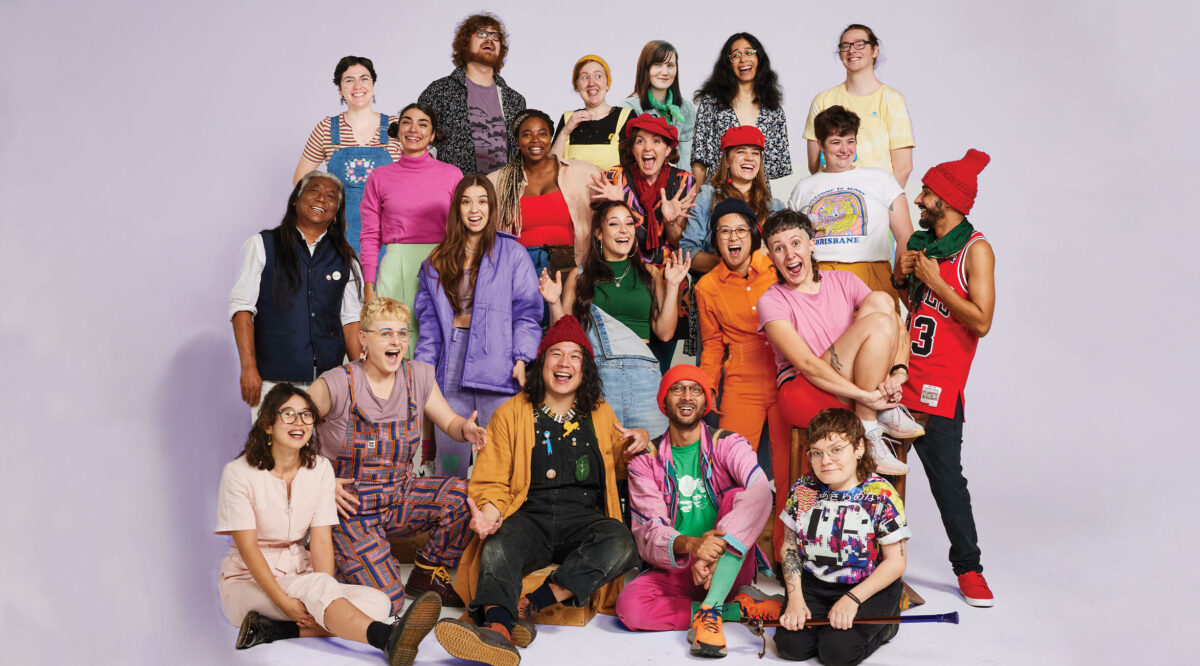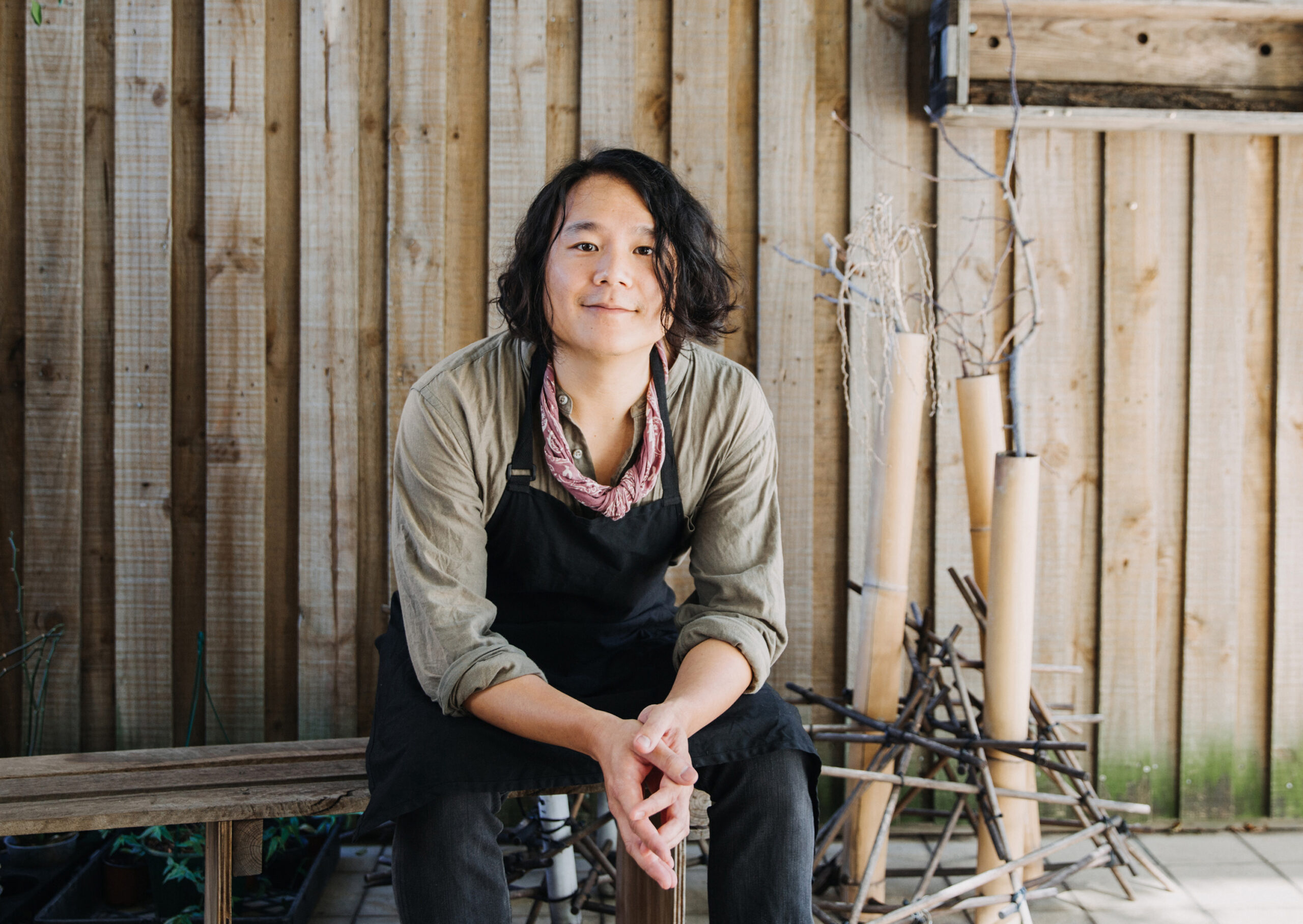
Matt Hsu’s Obscure Orchestra is clear in its commitment to equity, dignity and inclusion
Simone Amelia Jordan
“Can you play your instrument? Cool. But do we align when it comes to anti-racism, being allies to queer, non-binary, trans people? Are we pro-refugees coming here and making a home for themselves? That sort of thing.”
Key takeaways
- Be A Pronounced Safe Space
Matt lays out expectations for new members during their first rehearsal. “I do this little spiel. I say something like, ‘Welcome to the Obscure Orchestra. We’re going to go around in a circle and tell you our names and pronouns, our instruments, and you’ll take the time to get to know each other. But the important thing to know about the Obscure Orchestra is we are a safe space for queer, trans, non-binary people, people of colour, people of refugee backgrounds, and First Nations. That’s what we’re all about.” - Equity Isn’t A Buzzword, It’s Action
In addition to prioritising racial equity, the Orchestra is gender-equitable, with more members identifying as women than men. “That’s not by accident,” Hsu says. “I teach a Queensland University of Technology (QUT) course about music and culture. One of the stats is that when they’re at uni, there are the same amount of women as men studying music. But in the industry, just three per cent of music producers are women. So I’m trying to re-balance that a little bit.” Hsu also pays everyone equally, including himself. “Everyone volunteers to play, but if we get paid $2000, that $2000 gets divided by 20, and everyone gets $100.” - Do The Legwork And Show Receipts
Become an ally or advocate for overlooked communities in real life. “Go out, support marginalised people, come to understand them, have conversations with them, work and collaborate with them,” Hsu says. “Those stories and messages will come out in your creativity because you’ve become someone or an organisation respected and trusted enough to tell those stories.” - Support Comes In Many Forms
Hsu suggests that instead of dictating what First Nations, Black and minoritised artists and creative workers should do, arts and cultural organisations must let them lead. “They should say, we’ve seen the work you’re doing and the potential you have, so we want to give you this space and the resources you need to keep creating.”
Assembling the ensemble
Growing up in Brisbane, award-winning composer and musician Dr Matt Hsu was embarrassed by his Taiwanese roots. And, if it weren’t for the arts, he still would be.
“To avoid racism, I tried to distance myself as much as possible. I had this fraught relationship with my cultural identity,” Hsu says. “It got to a point where I realised this was internalised racism. I was ashamed of my own identity, and that’s not a good thing.”
The self-taught performer’s moment of truth was meeting and collaborating with world music artists when he started in the industry.
“Seeing how proud they were of the music they make—Afro-Cuban musicians, Hungarian musicians—made me realise music is a powerful thing. It’s a gateway to appreciating your own culture.”

Hsu’s newly proud, cross-cultural identity drove him to create the Obscure Orchestra. Although initially a pseudonym he concocted for his multi-instrumental talents as a soloist, in 2020, he turned it into Matt Hsu’s Obscure Orchestra, a 20-piece ensemble underpinned by gender equity, inclusion and visibility, and comprised of First Nations, Black, culturally and linguistically diverse, non-binary and trans artists.
Marginalised identities first
The Obscure Orchestra uses music projects to underscore refugee, immigrant, First Nations, gender and abilities diverse issues through creative collaborations. Hsu finds members through friendship networks or word of mouth. There isn’t an official audition process or formal contract, with Hsu only clarifying that he prioritises minority groups.
“We don’t discriminate, but let’s say we need a viola player. I’ll always look for people of marginalised identities first. I feel people from that background don’t often get the same opportunities as someone who may be white and cis-gendered. So this gives them a stepping stone.”
The Orchestra has no official Diversity and Inclusion rider – generally, a provision in a contract that provides for a certain level of diversity or diversity requirements in a production – and Hsu says their racial and intersectional equity is likely due to him being non-white.
“Maybe people from marginalised backgrounds find it easier to trust me and the project I’m doing and are more willing to be part of it without feeling like they’re reaching a quota,” he says.
Instrumental mastery is valuable, but Hsu says being a group member is “not about technical proficiency”.
“Can you play your instrument? Cool. But do we align when it comes to anti-racism, being allies to queer, non-binary, trans people? Are we pro-refugees coming here and making a home for themselves? That sort of thing.”
Compassion in challenging times
Due to the COVID-19 pandemic, Hsu says the ensemble’s first two years were “pretty chill”. However, in 2022, they have gained a steady following in the Queensland arts scene and with multicultural audiences, with performance requests from the QLD Performing Arts Centre (QPAC) and the State Library of QLD.
The shared value system of the Obscure Orchestra has led to very few challenges in Hsu steering the project. He acknowledges the logistics of organising 20+ plus people for rehearsals and gigs can be tricky, but so far there is limited tension or in-fighting.
“Any disagreements are healthy,” Hsu attests. “As an ensemble, we love each other, we love performing with each other, and the community sees itself reflected in us.”
He continues, “If we want the world to be compassionate and equitable, not everyone will read a thinkpiece or essay about cultural diversity or appropriation. Not everyone in their spare time will do that. But what everyone will do is watch entertainment. Listen to music, watch TV and movies. The arts. That’s how we reach people—not just the margins, but everyone.”
Simone Amelia Jordan Program Manager
Simone Amelia Jordan is an author, essayist, and journalist renowned for her innovative work in hip-hop media. As the founder of The Dream Collective, she champions diversity and mentorship, fostering growth for multicultural women in the arts and entertainment. Her debut memoir, Tell Her She’s Dreamin’, won the 2021 Richell Prize.
Recognised as Australia’s most successful hip-hop journalist, Simone Amelia Jordan’s career spans print, radio, TV, and digital media. Her debut book, Tell Her She’s Dreamin’, won the 2021 Richell Prize and is out now through Hachette Australia.
At 23, Simone founded Urban Hitz Magazine, the country’s highest-selling rap and R&B publication. Roughly a decade later, in a full-circle moment, she served as the content director of The Source, the New York City-based “Hip-Hop Bible” that inspired her reporting and social consciousness.
Alongside her media achievements, Simone has extensive experience in lifestyle marketing, event management, programming and content strategy, which she has leveraged in senior roles at Media Diversity Australia and Diversity Arts Australia. Simone also mentors racially diverse women in media, the arts and entertainment through her passion project, The Dream Collective.
What is the Imagine Project?
We’re publishing case studies and documenting Australia’s best work in advancing cultural diversity and racial equity and inclusion in the arts through the Imagine Australia Project, managed by Diversity Arts Australia (DARTS) and funded via the Australia Council’s Re-Imagine project and supported by Creative Equity Toolkit partner, British Council Australia. To find out more click below – or read the other case studies as they go live here.

